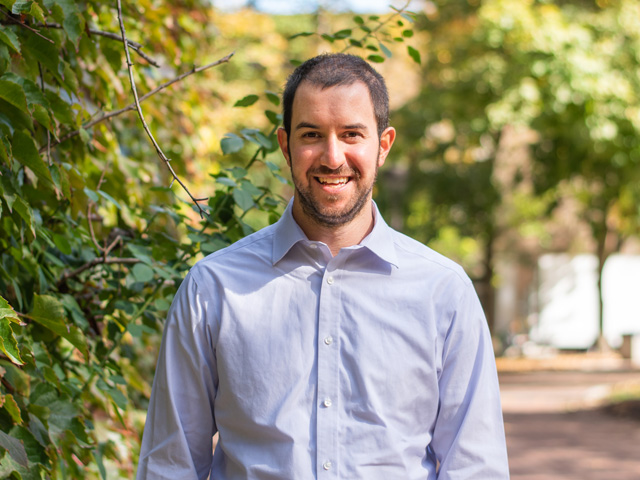Complex Systems Series: Spotlight on Aidan Brown

Aidan Brown
Aidan Brown’s path to becoming a Complex Systems researcher was … complex. After he fell in love with solving the problems of biological physics as an undergraduate student, he continued exploring questions that interested and inspired him, finding that his approaches and interests aligned with Complex Systems.
Today, Brown is one of four researchers at the heart of Ryerson’s Complex Systems initiative. Alongside Eric De Giuli, Catherine Beauchemin, and Sean P. Cornelius, Brown is helping Ryerson establish itself as one of the few institutions in the world with a dedicated Complex Systems graduate field and research function.
In a recent interview, Brown talked about his expertise in cellular systems, what inspires him about Ryerson’s team, and what Ryerson has to offer a student interested in studying Complex Systems.
How does your research in cellular systems and cell biology fit within Complex Systems?
Biological physics fits well in this realm because life is a great example of a complex system. One of the characteristics of Complex Systems is emergence, which occurs when the coming together of lower-level components leads to higher-level characteristics arising. Life is a great example of that, because individual molecules and small pieces come together to somehow create a thing that is alive.
Does that mean you are trying to decipher the nature of life itself?
Well, that’s the dream. Maybe another way to frame our goals is that we are trying to spell out the physical rules and principles behind how life pulls off its many small tasks. So, like most science, the work moves forward by looking at small pieces, usually where we can leverage some recent advance, technique or measurements. We explore questions like, “How can you put energy into this individual part of the cell and get it to do its job? What is needed to organize a cellular structure in a certain way? And how do all these pieces come together in an organized behaviour?”
Given the theoretical and interdisciplinary nature of your work, how should we think about its potential impact?
As an interdisciplinary research area, Complex Systems stimulates original thinking by enabling researchers to see their own discipline in a new way. We apply tools, frameworks, theories and processes from other disciplines to our own area in ways that are less common. In my case, that means exploring how physics and biology inform each other, and how other disciplines can help us to think about medical and biological problems in new ways. If you play it forward, the new frameworks I am developing could eventually help understand medical conditions in new ways.
What’s distinctive about the Complex Systems community at Ryerson?
That it exists. There are very few places in the world with a group of researchers organized around Complex Systems. It’s unique in Ontario, and rare in the world. Compared to other fields, Complex Systems is relatively young. Ryerson’s foresight and vision have placed it at the vanguard of the field in its nascent stage.
Tell us about the interplay of your work and the other three researchers on Ryerson’s Complex Systems team.
The interplay comes in how we can help each other see our own work in new ways. My research revolves around the physics of cell biology. Sean and I explore the intersections of my knowledge and his expertise in how diverse networks rearrange and break, such as power grids and ecosystems. With Eric, we can combine my background in biological physics and his deep understanding of statistical physics to think about how biological reactions are organized. Catherine has vast knowledge in virology. She’s really experienced at extracting quantitative information and understanding using measurements and mathematical models. Working together, we all hope to solve problems that would remain intractable if we stayed siloed.
What would you say to a potential graduate student considering joining your group at Ryerson?
My group’s work, and a lot of research in Complex Systems, is sort of like the ultimate word problem from a math textbook. The questions themselves may not even have numbers to start with, but we use math and physics to answer them anyways. Like, how do proteins know to go to one part of the cell and not another? Of course, doing research in my group will teach students how to understand cell biology using physics. But underneath that, it’s about learning to smush together diverse math, physics, and programming techniques to find new understanding for anything you’re looking at.
Prospective students with a background in physics sometimes ask if they need knowledge of biology to work in my group, and they don’t. The same is largely true for Complex Systems, with researchers from a bunch of disciplines picking up the parts they need along the way. Of course, the program itself brings a lot of this: We have researchers and courses focused on Complex Systems, so students learn how to approach problems in a uniquely Complex Systems way. Students in Complex Systems will work with a group of people that would be difficult to find elsewhere. I think the most important thing we look for is enthusiasm, you just have to be willing to dive right in.